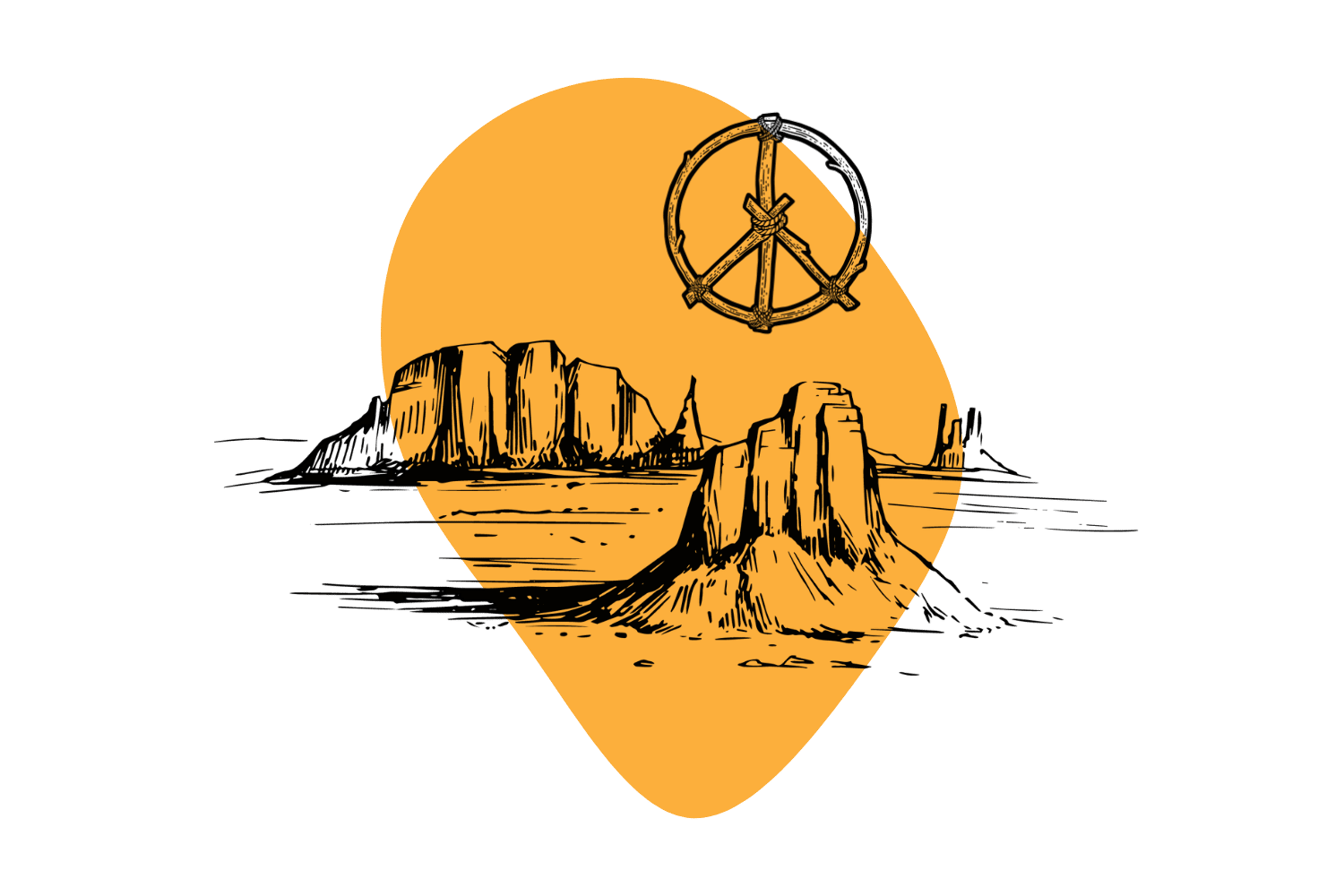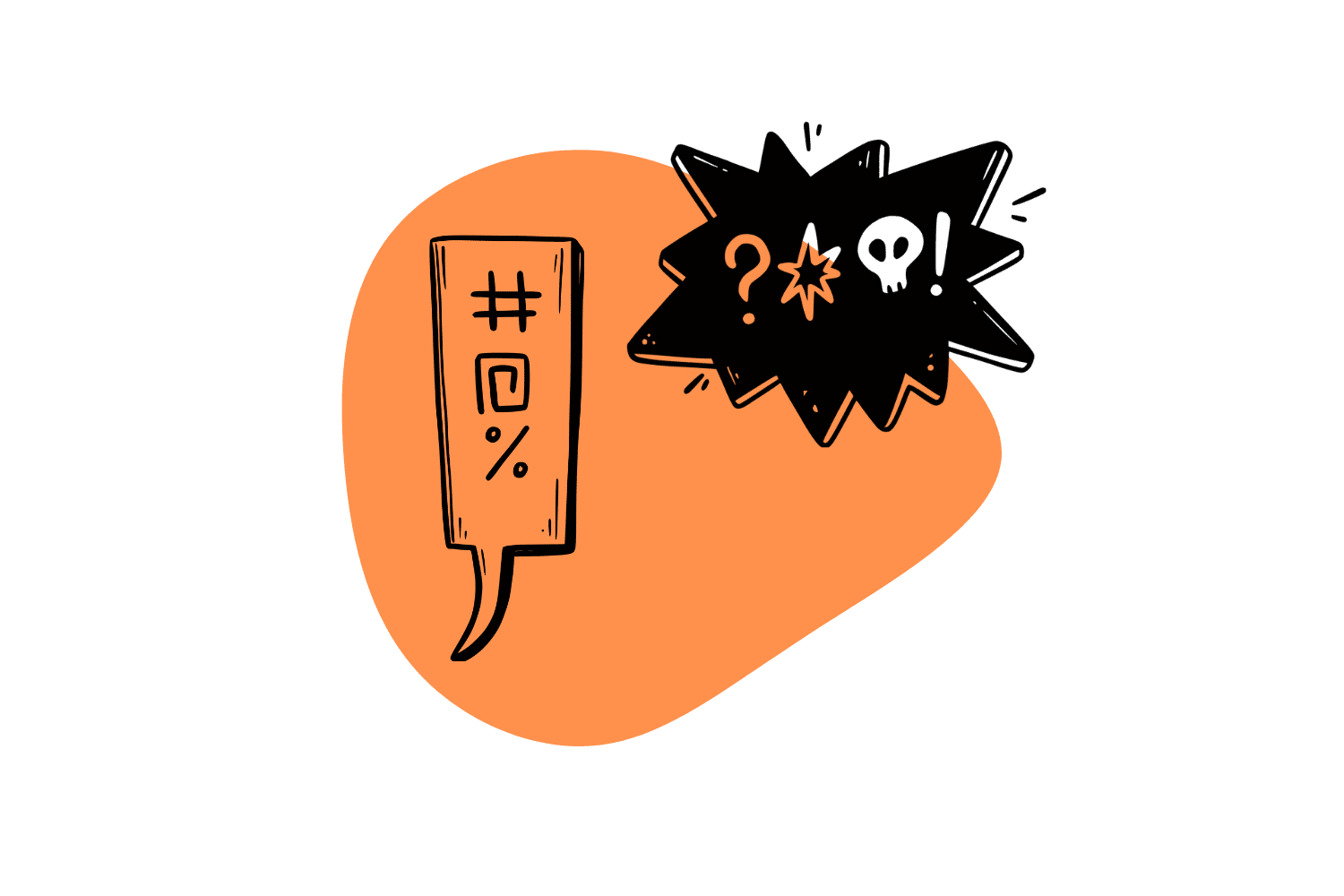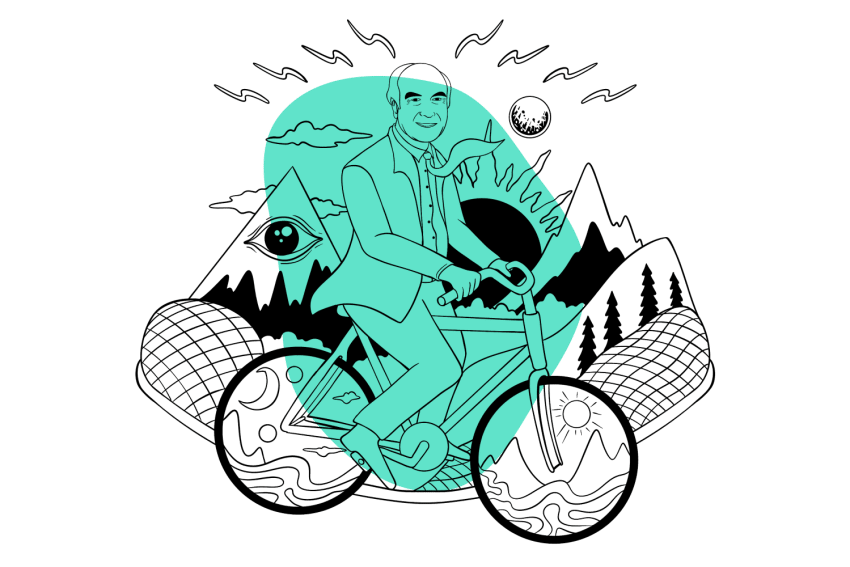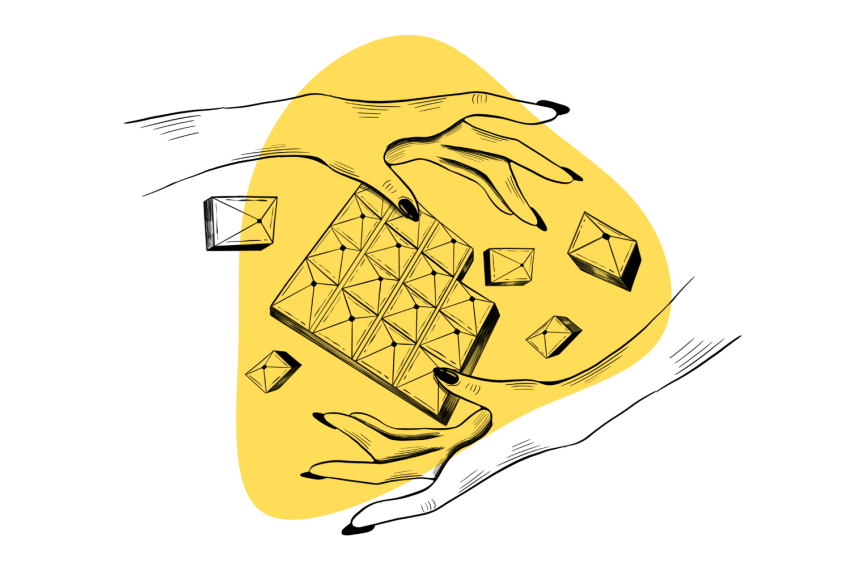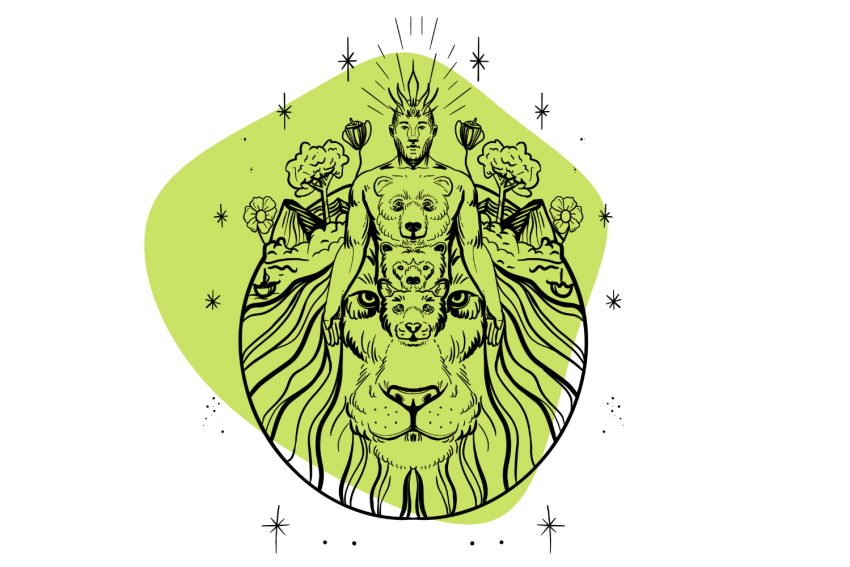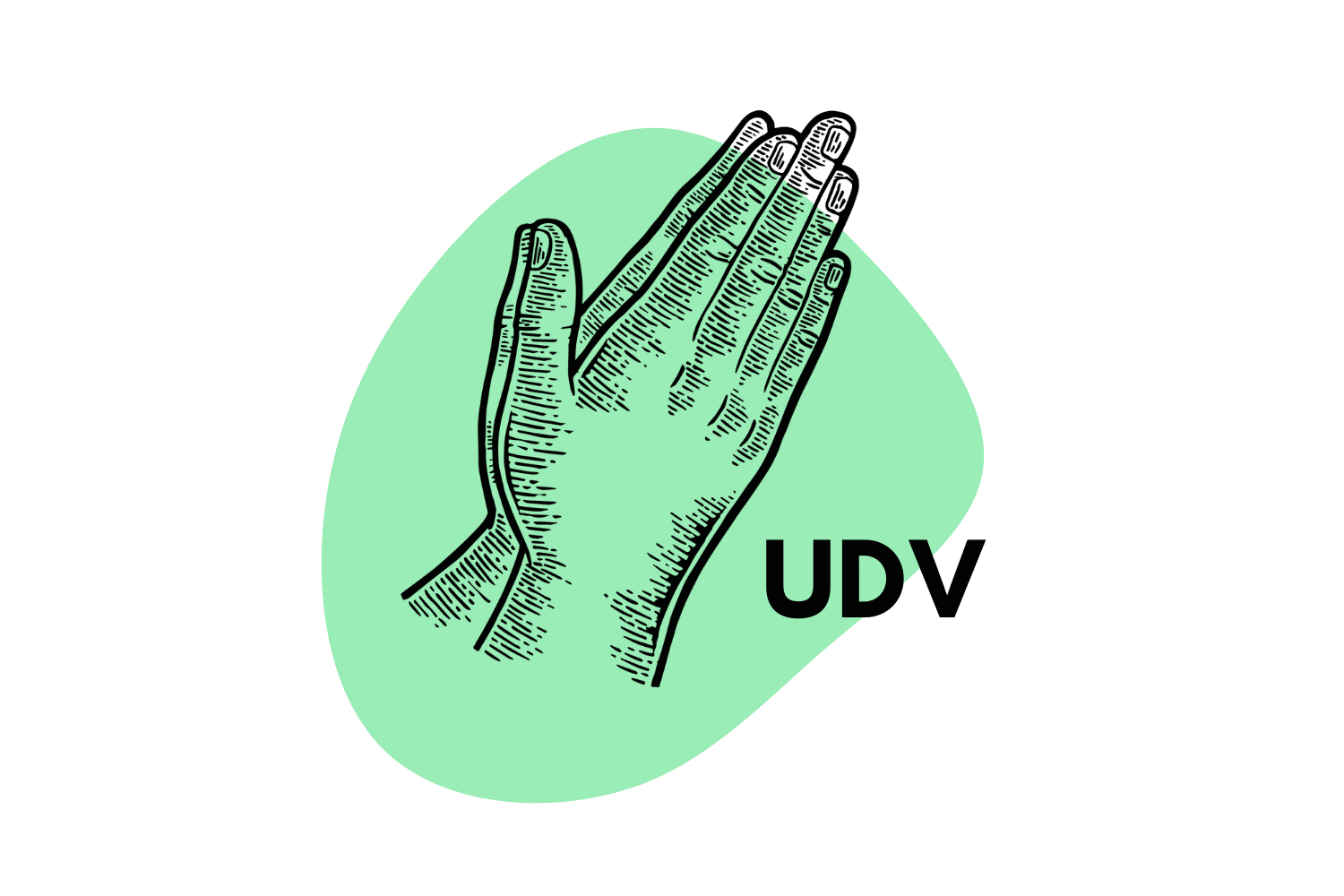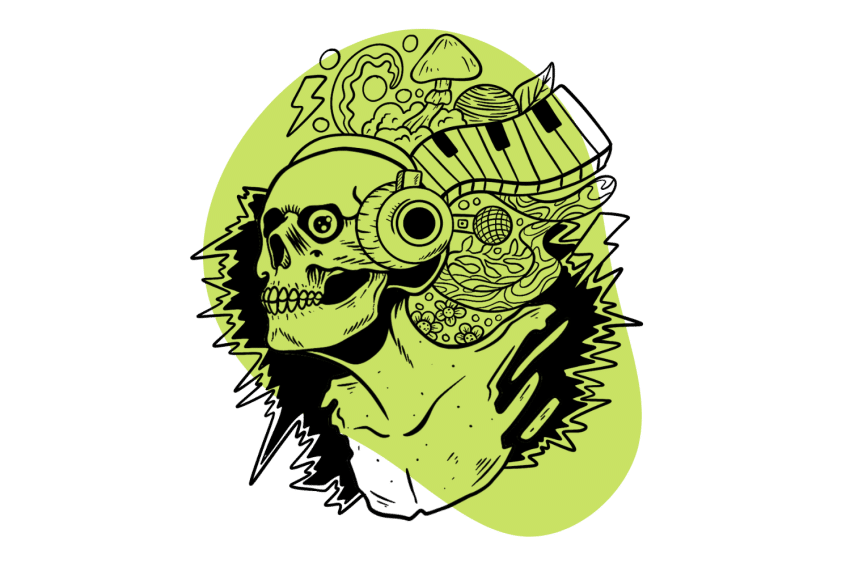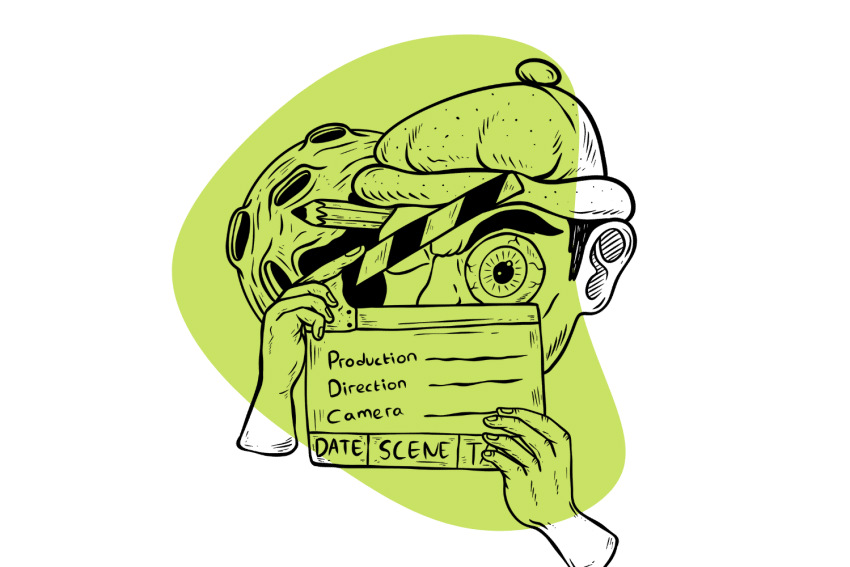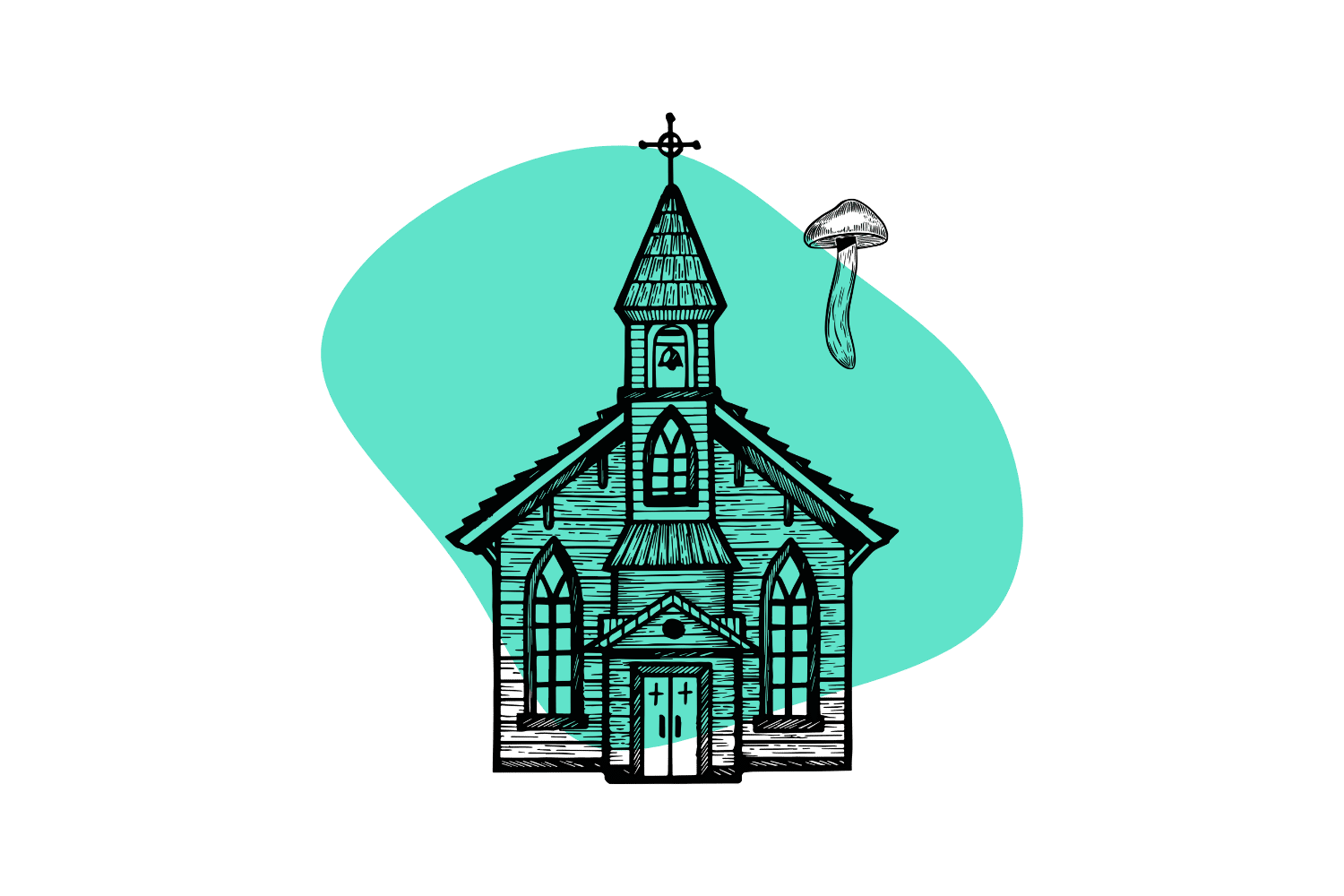The History of Psychedelics: Our Connection to Consciousness & Mind-Altering Substances Throughout Time
For as long as humans have been on Earth, we’ve sought ways to alter consciousness. Some scholars even believe religion itself is the result of early human exposure to psychedelics.
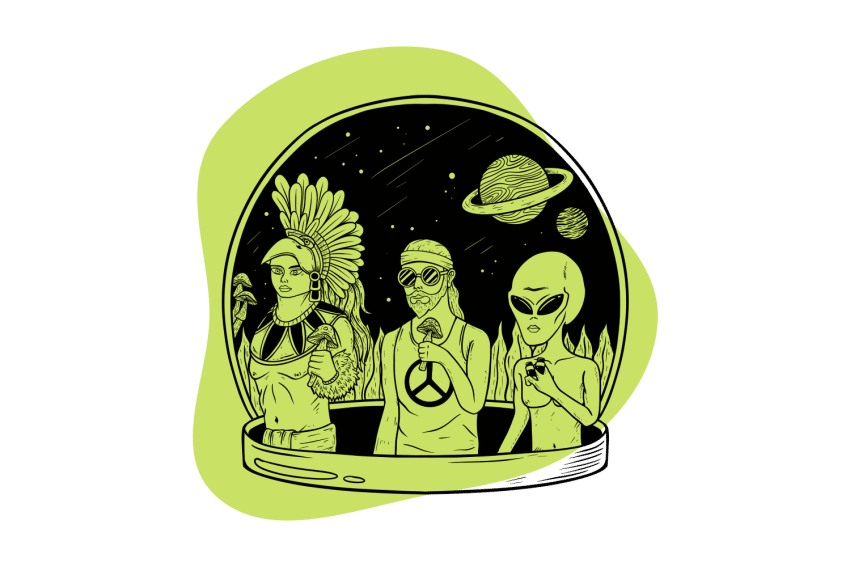
Psychedelics have been a part of the human experience for thousands of years.
There’s even some evidence of psychedelic use at the Göbekli Tepe site in Turkey — one of the oldest archeological sites in history, dating back to the Neolithic period roughly 10,000 years ago.
Let’s take a trip through time and examine the role psychedelics have played in human history up to the current era.
The Beginnings of Psychedelics: Ancient Psychedelic Use
Throughout history, humans have smoked marijuana, treated pain with opium, chewed coca leaves as medication, and ingested various psychedelics to broaden their spirituality and connect with the gods. However, we don’t have clear archaeological evidence as to when this practice first began or where it originated.
Even though evidence supports the idea that many cultures were aware of psychedelics, it doesn’t mean they were used in the ways we imagine.
A cross-cultural study of the ethnographic literature of 488 societies revealed that 90% of ancient cultural traditions had institutionalized forms of altered states of consciousness in their culture [1].
Algerian Cave Drawings — 7,000-9,000 Years Ago
One of the most widely referenced signs of psychedelic use is a mural in a cave in Algeria’s Tassili-N-Ajjer region of the Sahara desert. This art allegedly dates from 7,000 and 9,000 years ago and was prominently featured in Terence McKenna’s book, Food of the Gods. The mural depicts a figure that has come to be known as ‘mushroom man’: A humanoid figure with mushrooms sprouting along its body and a hand hovering above it.
However, this so-called ‘evidence’ of early psychedelic use is not exactly the original cave art – it is a drawing done by McKenna’s then-wife, Kat Harrison. Rather than including a photograph of the original mural in Food of the Gods, Harrison filled in what she perceived to be incomplete or damaged in the original painting and published her interpretation of this iconography. This often referenced sign of early use of psychedelics is therefore put into doubt and subject to skepticism.
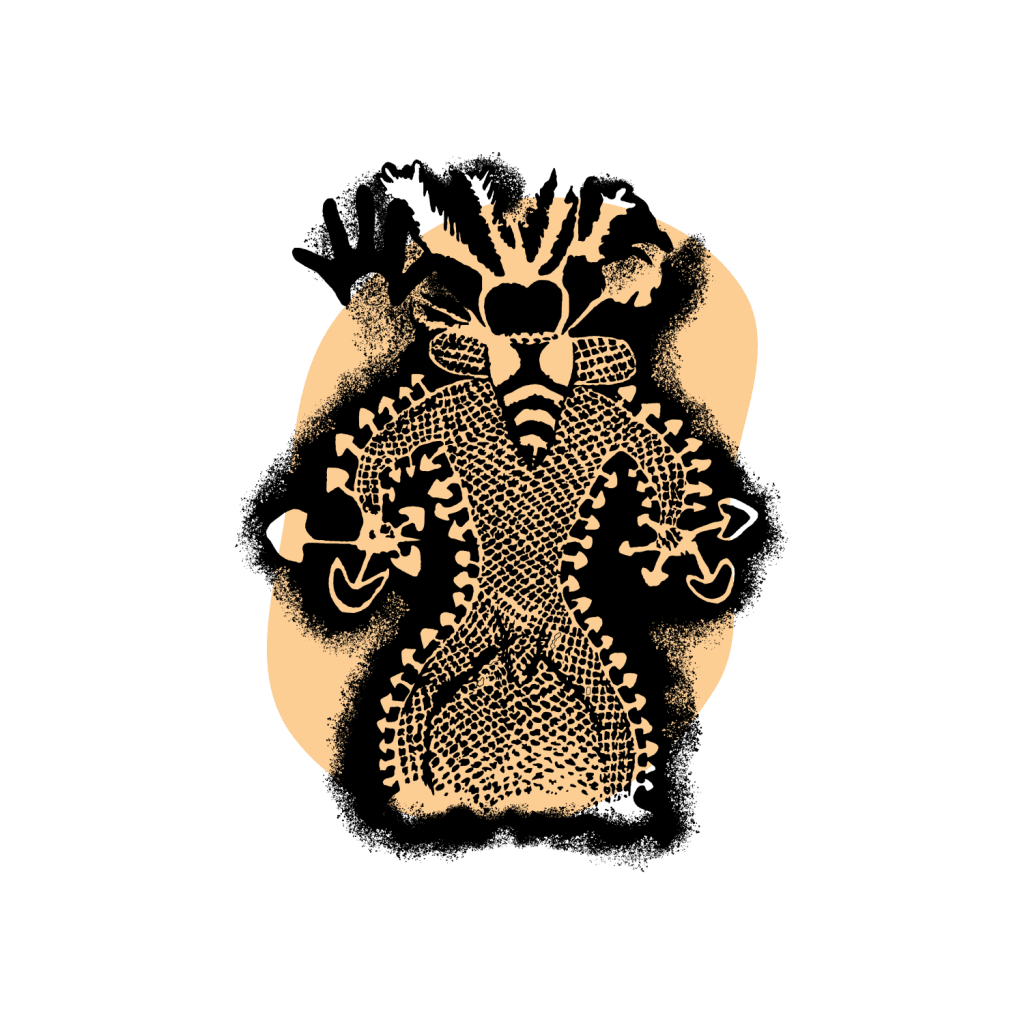
Mesoamerica — 5,500 Years Ago
One of the earliest pieces of evidence of the use of psychedelics dates back to 3,700 BCE. Specimens found in what is now Rio Grande, Texas, suggest that indigenous North Americans may have been aware of the psychedelic properties of peyote [2,3].
Eleusinian Mysteries — 3,500 Years Ago
The Eleusinian Mysteries, or the Rites of Eleusis, was an initiation ritual that’s still shrouded in secrets. To this day, no one knows what happened in the Telesterion, an underground theatre in Eleusis, Greece. Initiates were sworn to secrecy. We know that the rituals celebrated the story of Demetrius and Persephone, and participants experienced a significant, life-altering transformation. They no longer feared death and saw the world — and their place in it — in a new way, changing them for the better.
Before the secret ritual took place, initiates drank a popular barley drink called kykeon (it’s even mentioned in the Odyssey Book X). While the working class drank it often, this pre-ritual drink is believed to have contained something extra — ergot, a psychedelic fungus found in rye. The same fungus which LSD would be later synthesized from.
To get an idea of just how incredibly pivotal this ritual was, historians say that everyone who was anyone in that time (1500 BCE – 392 CE) was an initiate. We’re talking about Plato, Socrates, Plutarch, Cicero, and other pivotal thinkers and writers of their time.
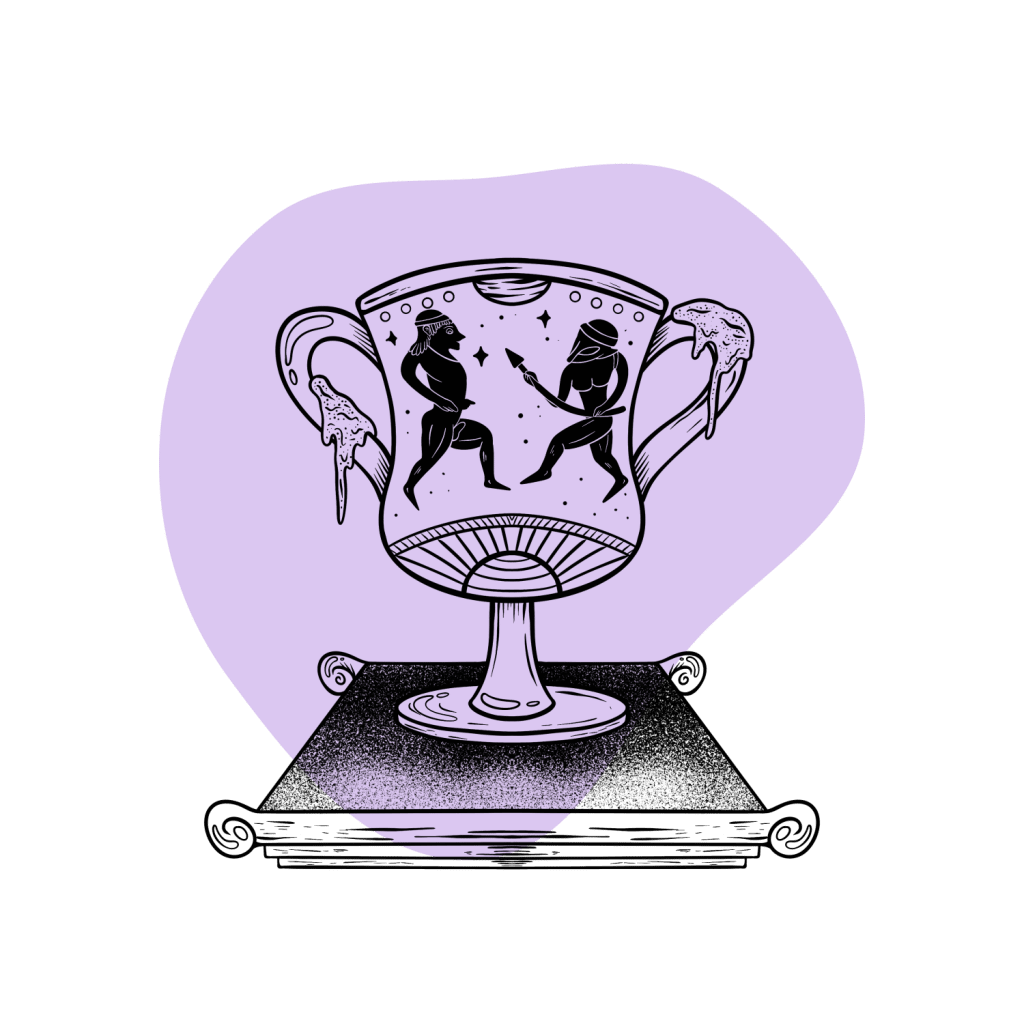
Vedic Sacrifices — 3,500 Years Ago
Soma is an unidentified drink mentioned throughout the Vedas, a collection of Sanskrit texts from around 1,500–1,200 BCE. The Rig Veda is the first to mention Soma and describes a drink that “produces immortality.”
Soma has been thought to possibly contain Amanita muscaria (Fly Agaric mushroom), which was pressed between rocks, filtered through sheep’s wool, and offered as a libation to the gods. Anything left over was consumed by the priest and the sacrificer.
Ancient Near East — 3,300 Years Ago
Botanical remains provide clues as to which psychedelic plants ancient cultures once used. Archaeologists found traces of an extract from the Blue Water Lily (Nymphaea caerulea) in alabaster jars in the Annex of Tutankamun’s tomb.
A jar containing 10 liters of Viper’s Bugloss (Echium line), a hallucinogenic plant in the borage family, was found in the courtyard of a temple in Kamid el-Loz in Lebanon, which dated back to the Bronze Age.
It’s also believed that Cyprus was the source of opium in Eastern Mediterranean during this time period, and was transported in juglets shaped like poppy seed capsules.
Mayan Rituals — 2,200 Years Ago
The Mayans had strong spiritual practices that involved the use of psychedelics. They practiced divination in an attempt to communicate with spirits and gather information on the future or to understand the purpose of events that they experienced.
To do this, they made a drink called balché, which used the bark of Lonchocarpus longistylus and mixed with honey from bees that fed on a type of morning glory plant high in LSA, a psychoactive alkaloid.
As you can imagine, it took a large amount of the drink to cause intoxication. As a part of the ceremony, the vomit was gathered into a pouch and hung around the person’s neck (not recommended for your next trip).
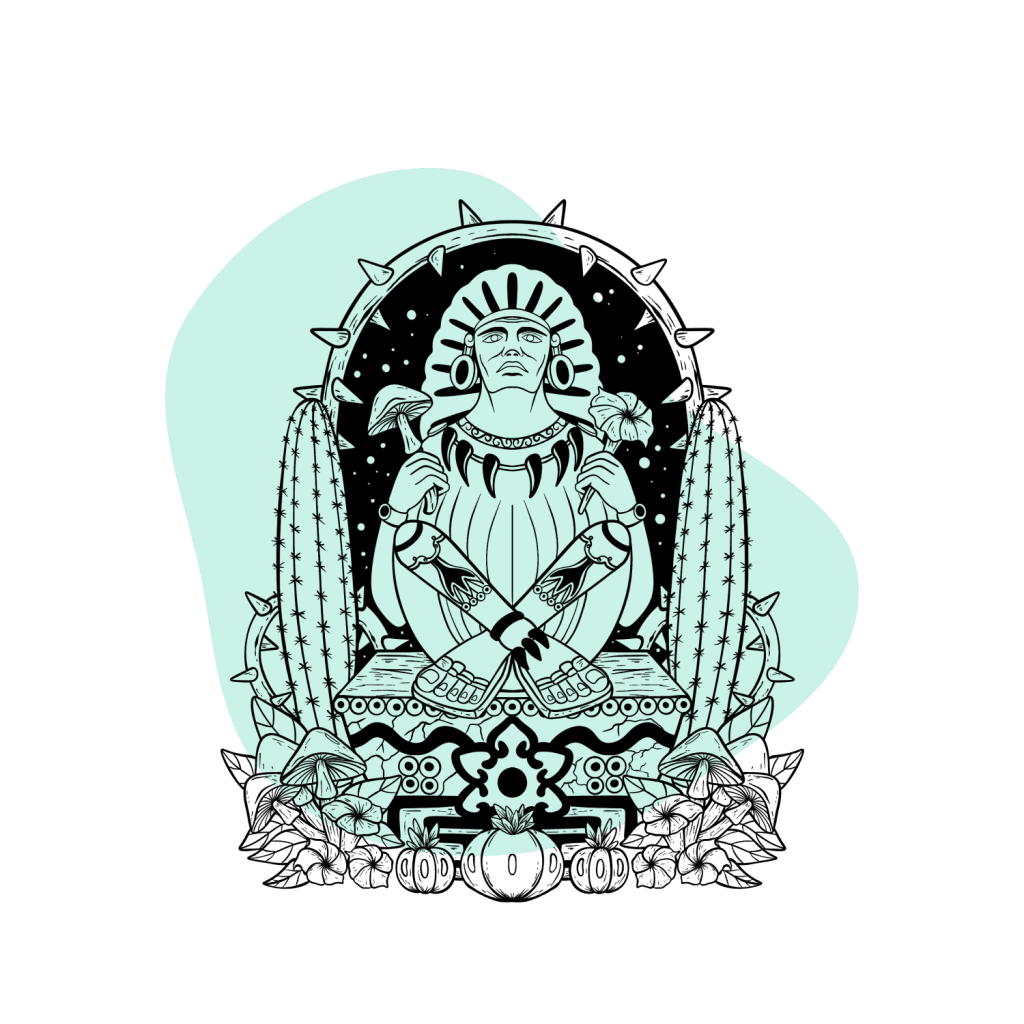
These participants often used other substances as well, like smoking or chewing tobacco with datura leaves or in ritual enemas (also not recommended).
Mayans also consumed k’aizalaj Okox (Psilocybe cubensis). Aztecs knew it as teonanácatl, but were also used by the Huastec, Totonac, Mazatec, and Mixtecs. The Mixtec god, Seven Flowers, has two mushrooms in his hand, similar to other groups’ gods.
Further evidence of ancient psychedelic use includes a stone carving in northern Perú depicting a deity holding the San Pedro cactus dating from 1,300 BCE. ‘Mushroom stones’ of humanoid mushroom figures in Mexico and Guatemala also date back to 1,000-1,500 BCE.
Also see: Datura: Risks, Experience & Trip Reports.
Chinese Herbs — 2,000 Years Ago
Chinese literature is ripe with works on pharmaceutical botany, including their earliest materia medica books, Sheng-Nung Pen-ts’ao Ching. Plants with hallucinogenic effects were first recorded nearly 2,000 years ago [4].
Many people have tried identifying the plants described, but some are still in question [5].
Lang-tang (Hyoscyamus niger L.) is the most famous hallucinogen in Chinese herbs. The name means “violent delirium” because of its potent effects.
Hyoscyamus niger L. is mentioned often in Chinese herb books and was known to be toxic, causing madness if the seeds weren’t treated properly. It was used for toothaches, dysentery, and other ailments.
Yiïn-Shih (Caesalpinia sepiaria) was another plant reported in the earliest books. The whole plant was used for medicine, but the flowers were said to have occultic properties, causing the user to see and communicate with spirits and produce “somatic levitation.”
Shang-lu (Phytolacca acinosa) is another plant mentioned in early herbal books. Apparently, there were two kinds — the red root of one was very toxic. Its hallucinogenic effects made it popular, especially among sorcerers. Even Taoists supposedly used it for “abdominal parasitic worms and for seeing spirits.”
There were several species of Man t’o-lo (Datura alba) — a deadly plant still misused today — but the literature often didn’t differentiate between them. It’s likely these were introduced later on, since there’s no mention of the plant in the older herbal books. The flowers and seeds were used externally for infections and were mixed with cannabis to be used as anesthesia for minor operations and cauterizations.
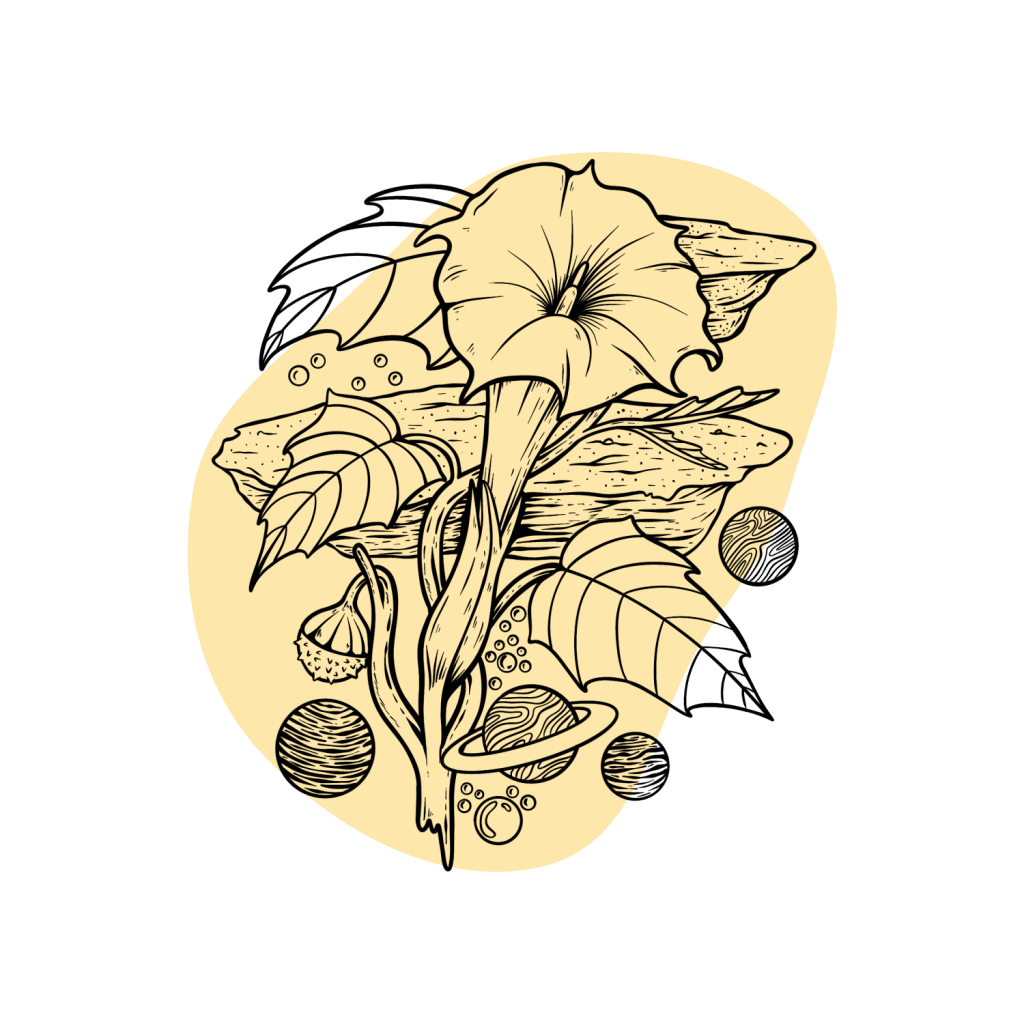
Bolivian Shaman Pouch — 1,000 Years Ago
Another piece of compelling evidence of the long history of psychedelic use is the discovery of a shaman’s pouch in southwestern Bolivia, dating back about 1,000 years.
This pouch contained psychedelic substances, including bufotenin and dimethyltryptamine (DMT). It was inferred that the shaman would crush plants into a snuff and snort the prepared drug or consume it via a beverage. This evidence was published in 2018 in the Proceedings of the National Academy of Sciences, and it demonstrates the potential use of psychedelics at least 1,000 years back.
Popularization of Psychedelics in Western Culture
Although common in ancient cultural practices worldwide, psychedelics took their time to reach mainstream western culture as we know them today.
What is now probably the most popular psychedelic, LSD, wasn’t invented until the 1940s when Swiss chemist, Albert Hofmann, synthesized LSD and tried 250 micrograms, resulting in a rather intense bike ride home.
LSD was brought into the mainstream American consciousness by a TIME magazine cover featuring the article, “The Discovery of Mushrooms that Cause Strange Visions.” This article was published in 1957, over a decade after Albert Hoffman’s first meaningful LSD experience.
The large boom of psychedelics then properly reached mainstream status through the rise of the 60s hippie counterculture movement. Influenced by eastern spirituality, artists like The Beatles, beat writers like Kerouac and Ginsberg, and other influential personalities of the time brought psychedelics and the idea of the expansion of consciousness into the new-age spirituality that governed the counterculture movement.
Psychonauts of this time heavily researched and advocated for psychedelics. Timothy Leary and Ram Daas (then Richard Alpert), maybe two of the most renowned figures in the psychedelic revolution of the 60s, dove heavily into psychedelic research reaping the short benefits of pre-prohibition America. They formed the Harvard Psilocybin Project and ran the infamous Good Friday Experiment. Their work was highly influential with people in the field and highly criticized by the Nixon government.
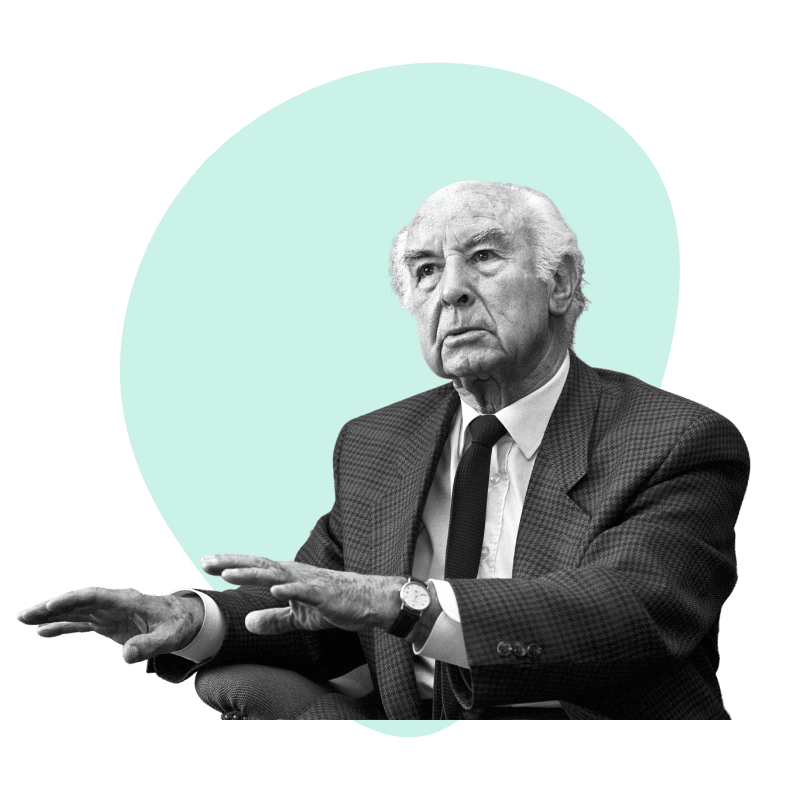
MK-ULTRA
The infamous and highly controversial project MK-ULTRA ran from the early 1950s to the early 1970s. It was a CIA-led, pseudo-legal human experiment in the pursuit of mind control. The purpose was to evaluate the use of LSD and other drugs as an interrogation and psychological torture tool.
The project was a response to the cold war and the American government’s fear that their Soviet enemies had some sort of mind-control technique, so MK-ULTRA was launched to develop a technique that could be used against the Soviets, Chinese, and North Korean.
This secret CIA project experimented on unknowing people without consent to participate. This led to several scandals, especially after the death of Frank Olson, a bioweapon researcher for the USA army who, after being experimented on, committed suicide.
MK-ULTRA also experimented with other mind-altering drugs, including heroin, MDMA, magic mushrooms, and methamphetamine.
The project was exposed by an article in the New York Times in 1977 which led congress to investigate the CIA, FBI, and military intelligence agencies. The program was shut down, and president Ford’s government would then pass regulations against experimentation with drugs in humans unless they had written consent.
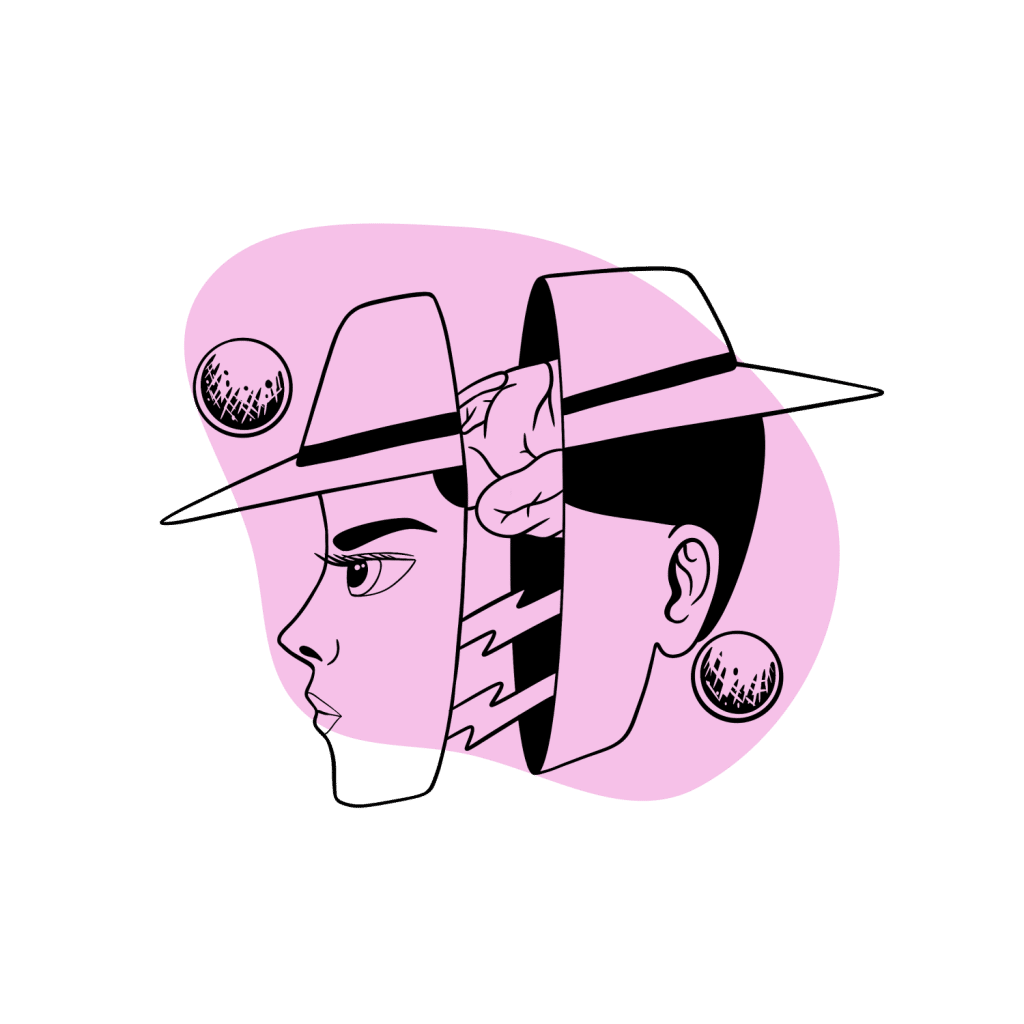
Prohibition Era
Although the Prohibition Era is associated with 1920s America, when Alcohol was outlawed, the history of prohibition with psychedelics follows a later timeline.
As psychedelics became more widespread in the 1960s, the pushback likewise increased. The counterculture movement of the 60s and the popular use of psychedelics resulted in legislative action.
President Richard Nixon declared war on drugs and condemned drug abuse as “public enemy number one.” This government intervention effectively halted any and all research into the uses and benefits of psychedelics.
Specifically, The Controlled Substances Act of 1970 was put into motion to prohibit selling, possessing, and using psychedelic substances in the United States. This legislation effectively began the Prohibition Era of drugs; LSD, peyote, psilocybin mushrooms, heroin, marijuana, and cocaine were labeled Schedule I drugs and banned.
The rest of the world quickly followed American influence, and possession, use, and distribution of psychedelic drugs quickly became a crime in almost every country.
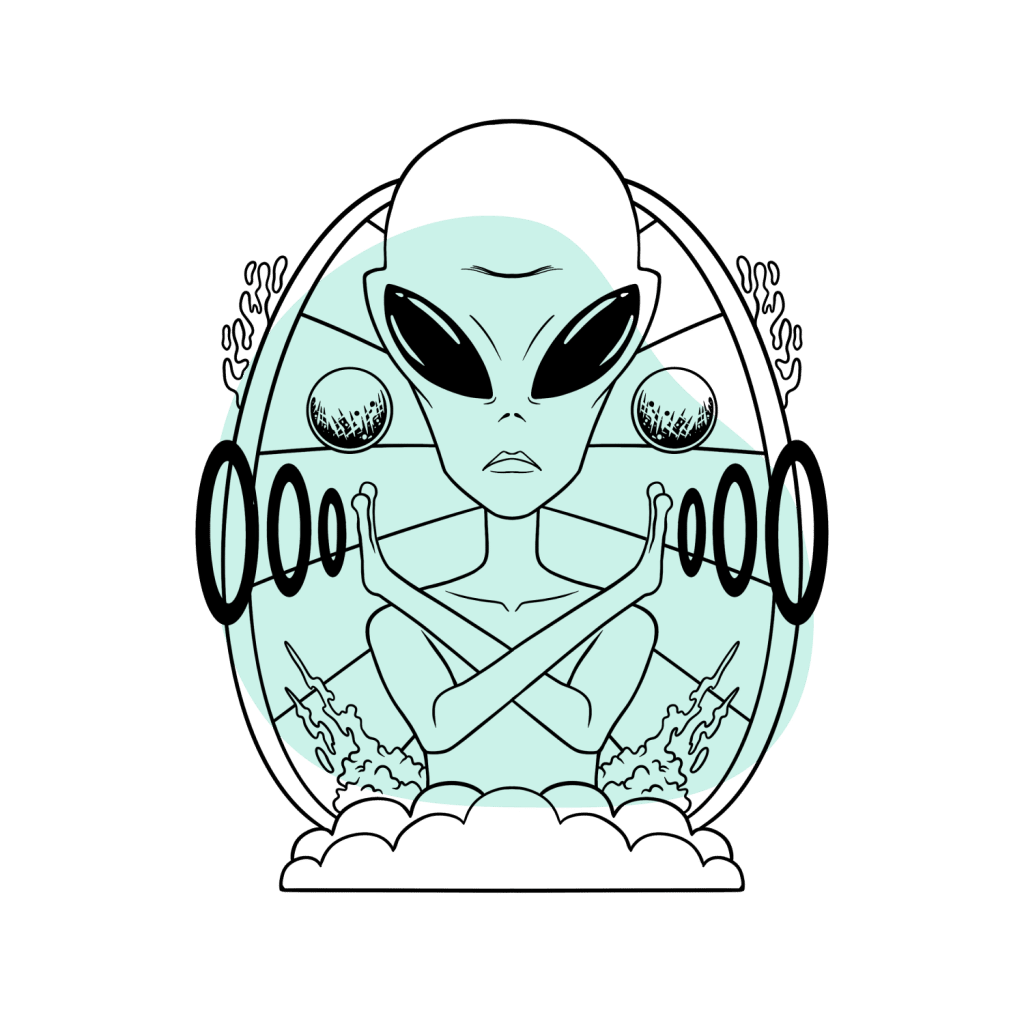
This “war” had and continues to have devastating impacts on individuals that turn to psychedelics for religious, spiritual, and self-exploratory purposes, as well as indigenous communities where these substances play a deep cultural and spiritual role.
The consequences were (and are still) severe — a permanent criminal record, decreased access to education, entrenched systems of poverty that prevent socioeconomic mobility, and further systematic marginalization of already oppressed communities.
One out of five American prisoners were charged with non-violent drug-related offenses, and jails around the globe are still plagued with people who are not a threat to society serving long sentences for simple possession or consumption of drugs.
This war on drugs generated a strong stigma around recreational drug use. Psychedelic research came to a forced halt, leaving a big gap in the research timeline of the field for several decades.
Modern Times
Today, and for the last few decades, there has been a rebirth in the psychedelic field. Interest has grown in studying psychedelics’ medicinal, psychological, and recreational uses, and research is starting to flourish with promise again.
Many state governments in the United States have legalized the recreational use of marijuana, indicating a shifting attitude about recreational drug use. Most states also now have medical marijuana programs, which is evidence of the shift in a belief, giving previously stigmatized drugs a place in the medical field.
There is also the discussion of decriminalization — in 2001, Portugal became the first European country to decriminalize personal possession of small amounts of certain drugs, such as marijuana, cocaine, heroin, and methamphetamine. Instead of being sent to jail, those caught with small amounts of these drugs are reviewed by a psychologist, social worker, and legal adviser and offered access to therapy and health services.
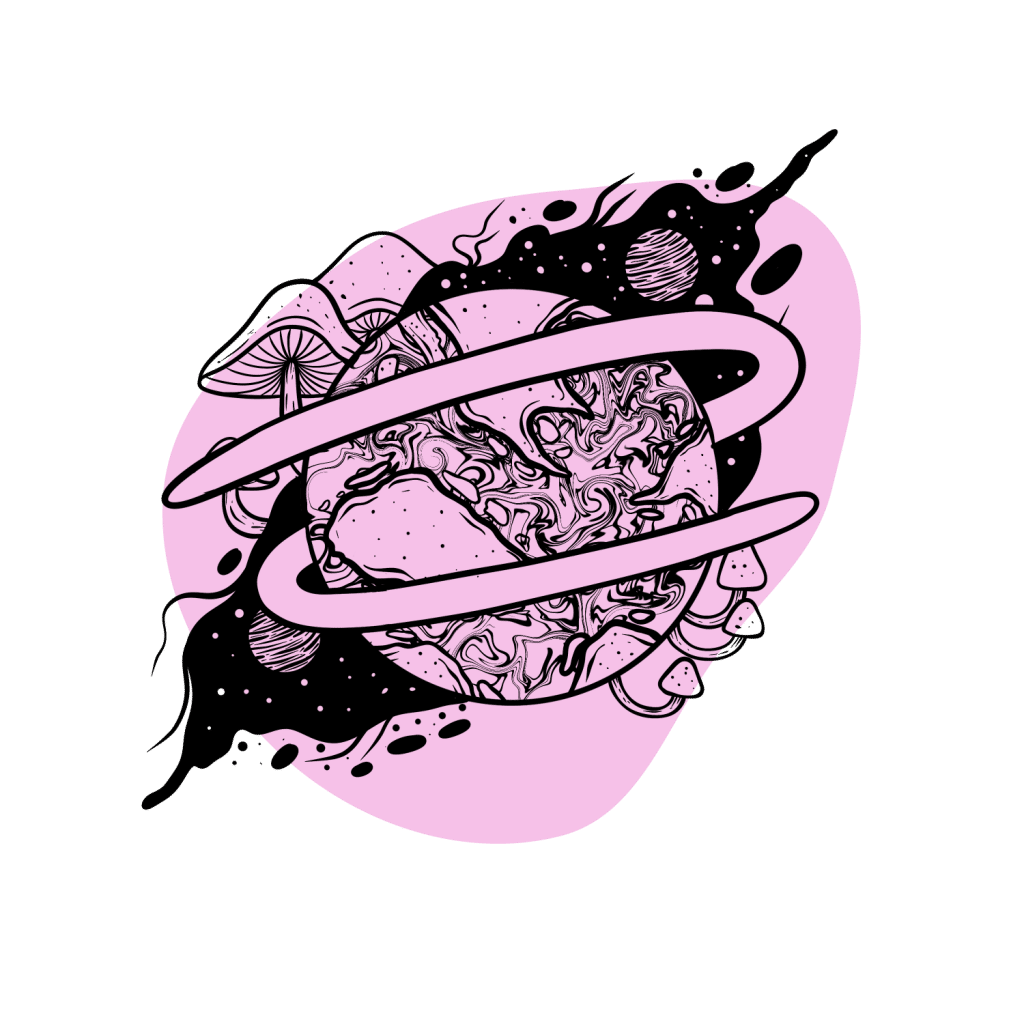
Likewise, some areas in the United States have decriminalized other Schedule I drugs. Substances like psilocybin mushrooms, for example, won’t land those who use or possess them in jail in areas like Oregon, Washington, California, Colorado, Michigan, Massachusetts, or Washington DC.
With this tentative acknowledgment and interest in drugs and psychedelics, the research that had been hastily cast aside in the 1970s has begun to resume, and psychedelics have become more visible in recreational use. The recent emphasis on research and the potential mental benefits of psychedelics has loosened the war on drugs-driven stigma and allowed new research and interest in psychedelics to begin to flourish.
Medicinal Psychedelic Use
Due to the decades of continual advocacy and education and the shifting perceptions of illegal drugs, research into the medicinal uses of psychedelics are in full swing again. A major theme of modern day research is to try and harness the psychological effects and long-term impacts of psychedelics to reprogram the brain and help to heal persisting illnesses [6]. Some of these ailments include post-traumatic stress disorder (PTSD), alcoholism and addiction, depression, and anxiety surrounding death and terminal illness.
This research is even supported by the US Food and Drug Administration (FDA). In 2019, the FDA approved a psychedelic — esketamine — as a treatment for persistent and medication-resistant depression. Further, the FDA has recognized MDMA psychotherapy for PTSD and psilocybin for depression as ‘Breakthrough Therapies,’ meaning that they are extremely promising.
Microdosing
A major trend in recreational psychedelic usage is what is known as ‘microdosing.’ Microdosing is when someone takes a very small dose — usually 5 to 10 percent of a standard dose — of a psychedelic drug to stimulate creative thinking, sharpen focus, or alleviate anxiety and depression [7]. While scientists are still debating whether people who microdose are experiencing a placebo effect or the actual effect of the psychedelics, this practice is utilized by people ranging from cancer patients to cope with their intense mental anguish to influencers of Silicon Valley.
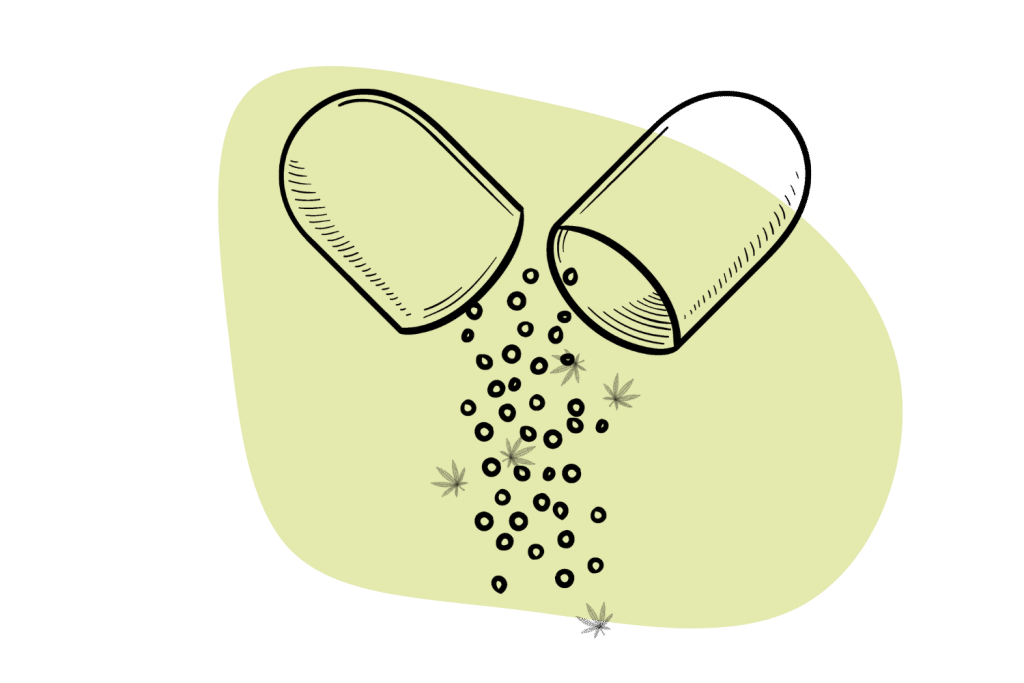
Recreational Psychedelic Use
The recreational use of psychedelics has surged lately, perhaps as a reaction to the bleak reality of weathering a pandemic, wars, violence, social upheaval, and economic crisis. Although LSD, for example, has not returned to its popularity at the height of the 1970s, researchers with the National Survey on Drug Use and Health have found that LSD use has increased by 56 percent over three years, predominantly among college-educated people and people between the ages of 35 and 49.
Stigma around psychedelics has been decreasing in the last decades, and people have been more open about their experience with the recreational use of drugs. Marihuana, for example, has lost much of the stigma it had at the height of the war on drugs, and it is widely used worldwide without much secrecy.
Music Festivals
Recreational psychedelic use is also commonly found at music festivals, especially electronic dance music (EDM).
According to a study by American Addiction Centers, 57.4% of concertgoers report the use of Alcohol or drugs. Within this population, though, the substance most frequently used is Alcohol, with only 26.6% of concertgoers reporting usage of hallucinogens, including ecstasy, cocaine, benzodiazepines, or opioids.
One such festival, Burning Man, is a fringe art and music festival called “a rare gathering of super-rich drug enthusiasts” by Bloomberg magazine.
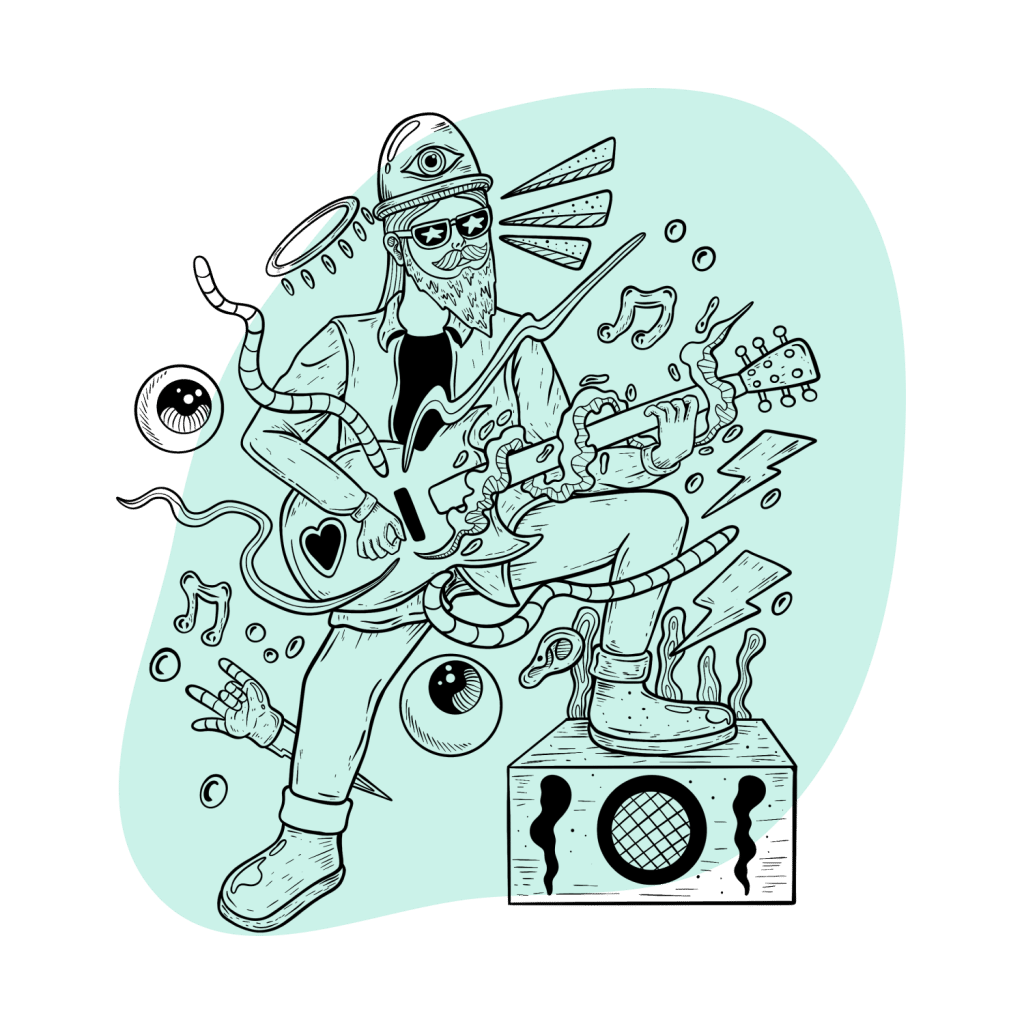
Changes to Legalization
Drug laws are perpetually changing. Keeping up with what’s legal where can be a near-impossible task, especially now as the attitude toward drugs has started to change.
To understand changes in legislation, it is important to be familiar with the difference between legalization and decriminalization.
Legalizing a drug means that there has been a legislative change to allow drug purchase, possession, and consumption.
Decriminalization, on the other hand, means that although these substances are still illegal, people caught selling, possessing, or consuming the drug will either not be punished or will be punished but on a reduced scale from the original penalties (so, being fined rather than put into prison). New York, for example, has not legalized marijuana but has decriminalized its use and possession; sale is still illegal.
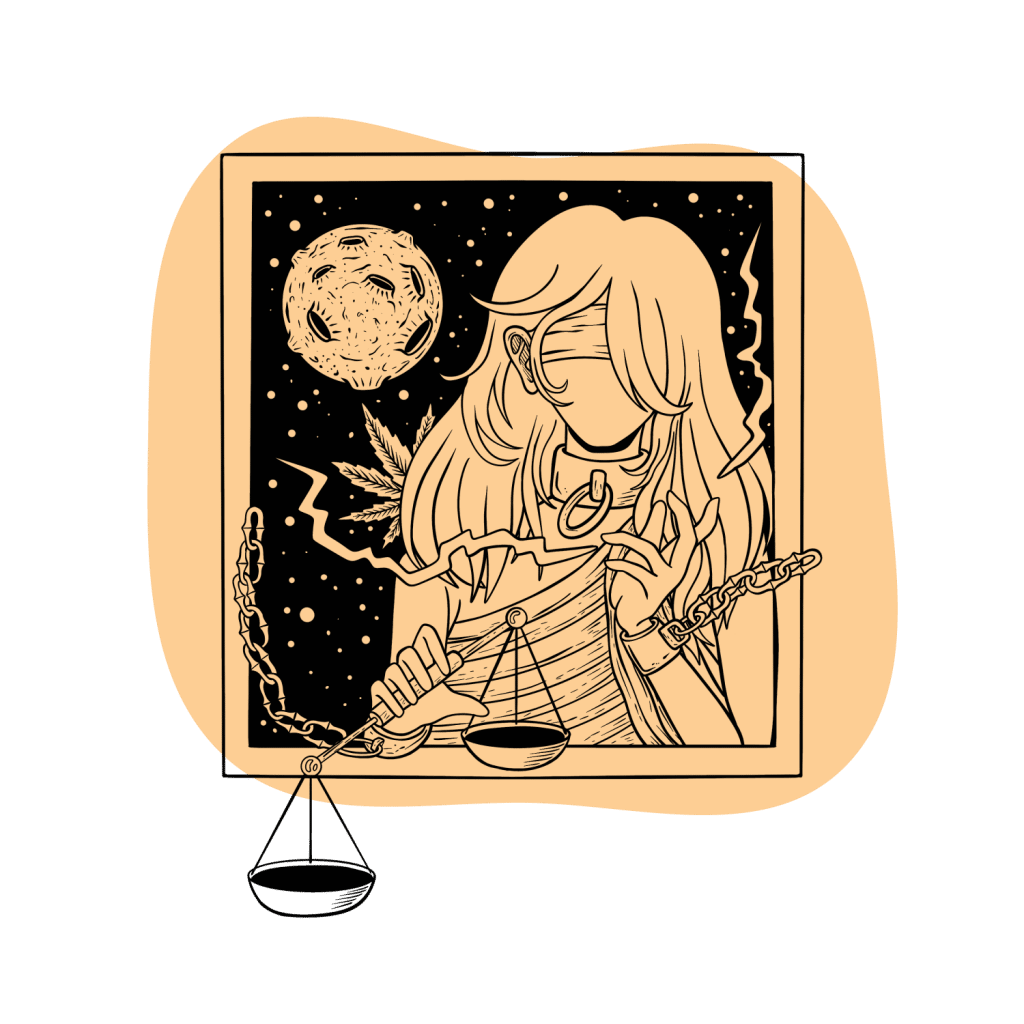
Decriminalization Laws In The US
The Controlled Substances Act of 1970 created the organizational system that categorizes and classifies drugs, and is still in use today. Categories, called ‘Schedules,’ were created to indicate the level of danger for each drug. Schedule I drugs are considered the most dangerous, with “no currently accepted medical use and a high potential for abuse,” while Schedule IV drugs exhibit “low potential for abuse and low risk of dependence.”
Within Schedule I are heroin, marijuana, THC, LSD, peyote, MDMA, mescaline, psilocin, PCP, and more.
Psychedelics, as Schedule I drugs, are still illegal on a federal level within the United States (except for religious use of peyote).
List of Municipalities With Decriminalization Laws:
| State | Municipalities With Decrim Laws |
| California | Arcata, Oakland, Santa Cruz |
| Colorado | Colorado Springs, Denver |
| Massachusetts | Cambridge, Easthampton, Northampton, Somerville |
| Michigan | Anne Arbor, Detroit |
| Oregon | Decriminalized state-wide |
| Washington | Seattle, Port Townsend |
Because the United States legislative system has a division between federal and state laws, laws can contradict each other on the state and federal levels. For example, while the sale and use of marijuana is still illegal under federal law, California has legalized marijuana sales and consumption. California residents can therefore purchase and consume marijuana within the state, but they can be prosecuted and punished for possessing marijuana out of the state.
Legislature across the United States continues to push for decriminalization, legalization, or at least medical authorization of psychedelics. The recent trends in legislation imply a shift in national consciousness toward greater acceptance and authorization of psychedelics, at least for medicinal purposes.
Map of Decriminalization in the US
Worldwide Decriminalization/Legalization
As the attitude toward drugs changes and the devastating effects of the war on drugs become more and more obvious, many countries have decriminalized or are on their way to decriminalizing entheogenic plants and fungi.
List of countries with decriminalization laws covering psychedelics:
- Austria
- Brazil
- Canada
- Croatia
- Colombia
- Czech Republic
- Jamaica
- Italy
- Netherlands
- Mexico
- Spain
- Switzerland
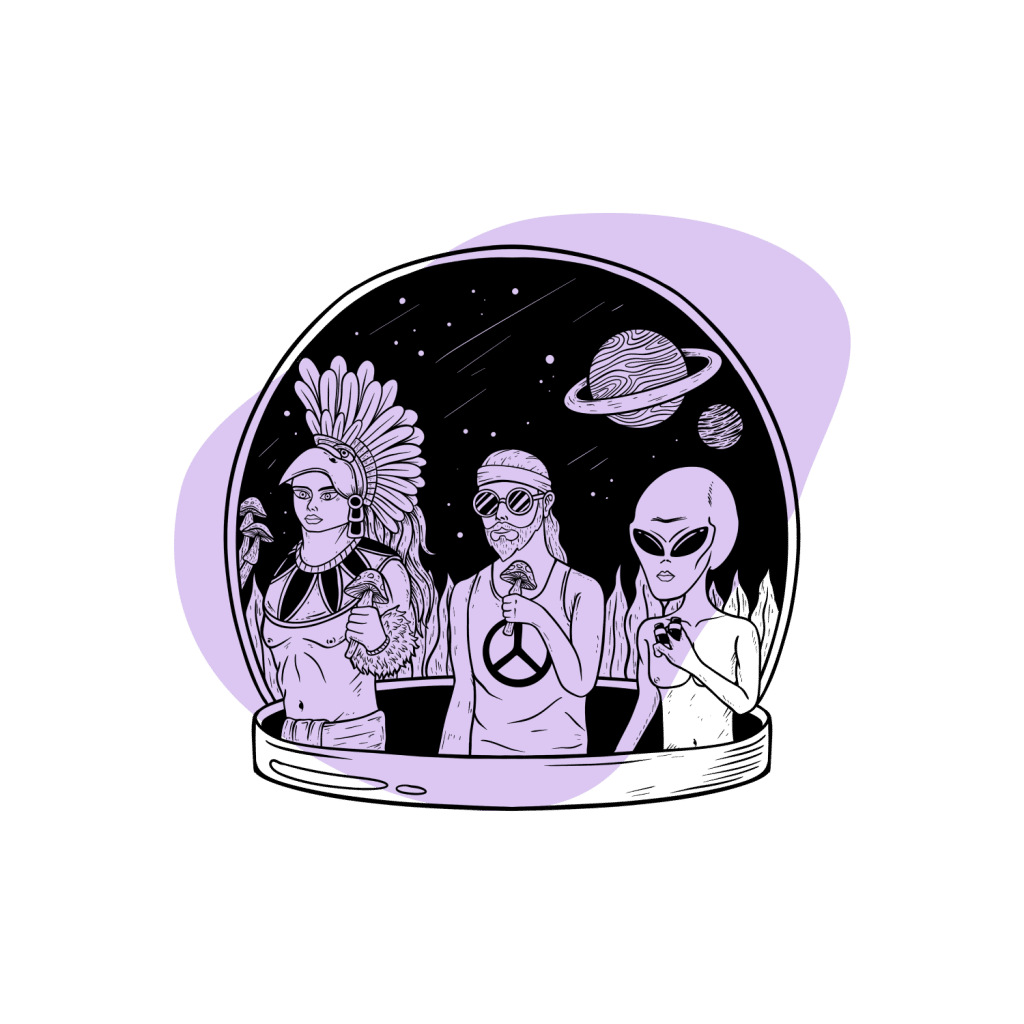
Wrapping Up: The Past, Present, and Future of Psychedelics
Although historians cannot be positive about when exactly psychedelic use began, psychedelics have been a part of the human experience since some of the earliest civilizations and have made their way throughout to have an impact on modern-day society.
The attitude toward psychedelics has changed throughout the centuries, from having a place in all that is sacred and healing in ancient cultures, to scientific interest in the 60s, to heavy-handed prohibition and stigma during the war on drugs, all the way to some new-found acceptance and revised legislation in modern times. Psychedelic use is a sign of the times and a reflection of where different countries stand politically, socioeconomically, and culturally.
Psychedelics, although considered potentially hazardous by some, do offer potential benefits. However, thanks to the War on Drugs and the widespread illegalization of many psychedelic substances, research has only scratched the surface of what could be possible. Psychedelics, though currently federally illegal, continue to be a part of the conversation about the human experience but also about potential remedies to severe mental illness, religious or spiritual connection, and expression of the self.
References
- Merlin, M. D. (2003). Archaeological evidence for the tradition of psychoactive plant use in the old world. Economic Botany, 57(3), 295-323.
- Carod-Artal, F. J. (2015). Hallucinogenic drugs in pre-Columbian Mesoamerican cultures. Neurología (English Edition), 30(1), 42-49.
- El-Seedi, H. R., De Smet, P. A., Beck, O., Possnert, G., & Bruhn, J. G. (2005). Prehistoric peyote use: Alkaloid analysis and radiocarbon dating of archaeological specimens of Lophophora from Texas. Journal of ethnopharmacology, 101(1-3), 238-242.
- Hou, J. P. (1977). The development of Chinese herbal medicine and the Pen-ts’ ao. The American Journal of Chinese Medicine, 5(02), 117-122.
- Li, H. L. (1977). Hallucinogenic plants in Chinese herbals. Botanical Museum Leaflets, Harvard University, 25(6), 161-181.
- Perkins, D., Sarris, J., Rossell, S., Bonomo, Y., Forbes, D., Davey, C., … & Castle, D. (2021). Medicinal psychedelics for mental health and addiction: Advancing research of an emerging paradigm. Australian & New Zealand Journal of Psychiatry, 55(12), 1127-1133.
- Anderson, T., Petranker, R., Rosenbaum, D., Weissman, C. R., Dinh-Williams, L. A., Hui, K., … & Farb, N. A. (2019). Microdosing psychedelics: personality, mental health, and creativity differences in microdosers. Psychopharmacology, 236(2), 731-740.

